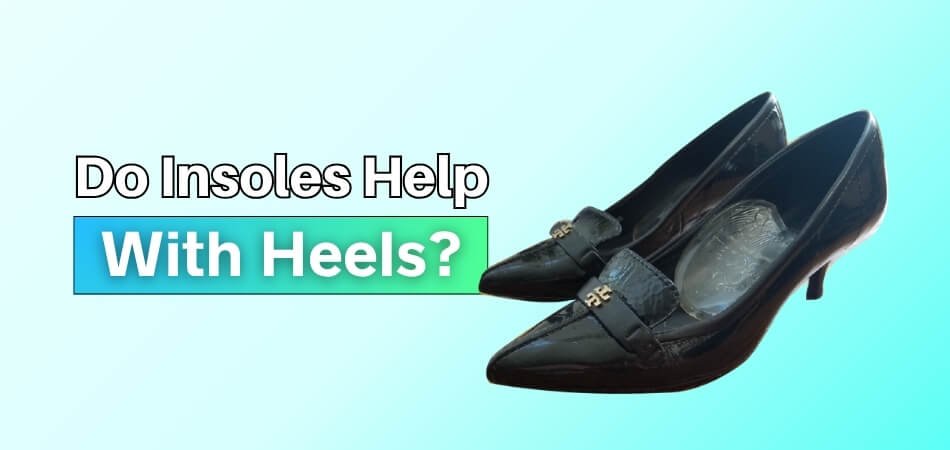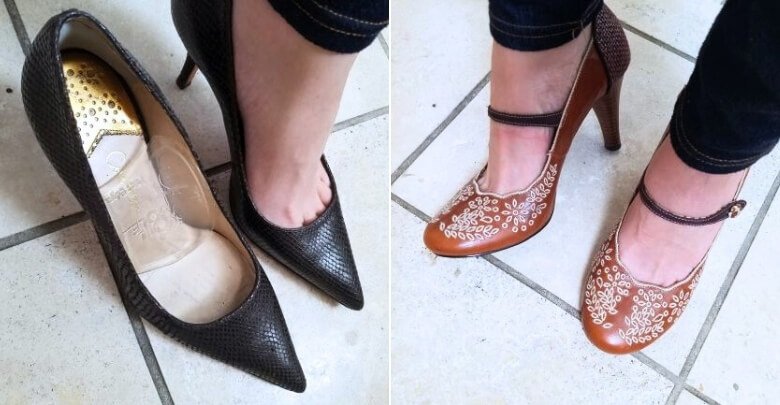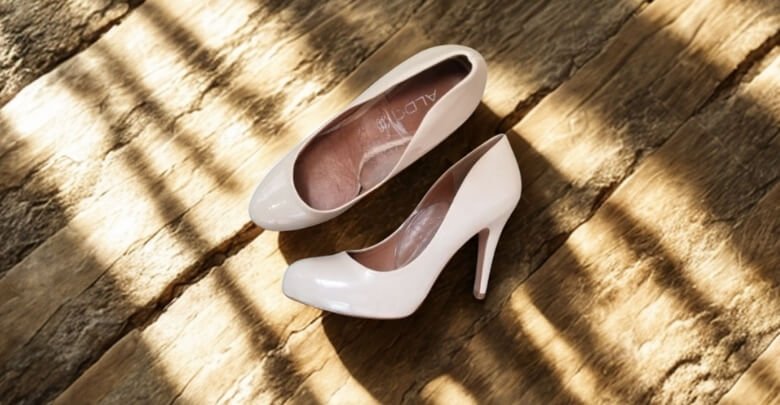Wearing high heels can look great, but they often hurt your feet. You might feel pain in your arches, toes, or heels. Sometimes your foot slips around, making walking harder. If this sounds familiar, don’t worry—you’re not the only one. A simple fix many people try is using insoles.
So, do insoles help with heels?
Yes, they do. Insoles give your feet more support, add soft cushioning, and help spread pressure. This makes wearing heels more comfortable. They can also stop your heel from slipping and reduce pain in the front of your foot.
Insoles can make a big difference. Want to know how to choose the right ones? Keep reading to learn more about how they can help you.
Do Insoles Help With Heels?
Yes, insoles do help with heels. They give your feet extra support, reduce pain, and add comfort. Wearing heels for long hours gets easier when the pressure is spread evenly. If your heels hurt or feel tight, the right insoles can really make a big change.

Arch Support Eases Foot Pain
Wearing high heels with no arch support can cause pain and strain in the middle of your foot. Your arch carries your weight, and without help, it may hurt after walking or standing. Good insoles with arch support bring back balance and help reduce that constant aching feeling.
The arch needs to be lifted just right to keep the foot in a natural, healthy shape. When this support is missing, your muscles work harder, which causes fatigue. A proper insole helps the foot stay strong and aligned without hurting over time.
Pressure Spreads Across the Whole Foot
Heels push most of your weight toward the front of your foot, which creates too much pressure. This often leads to soreness, burning, or even corns and blisters after long use. An insole helps move that pressure from one spot and spreads it across the foot.
By reducing how much of force that hits one area, the foot feels more relaxed and less tense. Your steps become softer and easier to manage without pain in the ball of the foot. If placed right, pressure-relief insoles can even improve balance and posture.
Cushioning Makes Heels More Comfortable
Many heels have hard footbeds that press against your foot all day without any soft padding. Insoles add a cushioned layer that reduces shock when you walk or stand. The soft layer lets you move freely without sharp aches slowing you down.
Using insoles with extra cushion can make thin, tall heels feel more like regular shoes. You’ll feel less pain even after hours on your feet at work or events. Some brands, like Soul Insole, offer slim options that work well without making your shoes too tight.
Heel Support Reduces Shock and Injury
Every step in high heels adds stress to your heel, especially if the ground is hard. Heel cups or padding inside insoles help absorb this shock and reduce sharp jolts. If you deal with heel pain or plantar fasciitis, this small fix can help a lot.
The back of the foot needs a gentle space to land in each step, and insoles provide that comfort. They hold the heel in place and keep it from rubbing or sliding around. This can stop blisters and make the shoe feel more stable as you move.
Right Insole Matters
Not every insole fits every heel, so choosing the right one is important for comfort and safety. Look for thin, full-length insoles that give arch support and still fit well inside narrow shoes. For smaller areas of pain, try gel grips or ball-of-foot cushions instead.
It’s also key to check how your shoe closes—some insoles make tight shoes too snug to wear. If your heel slips, a simple heel pad can help hold your foot in place. Try a few types to see which ones fit best with your favorite pairs.
Do Insoles Effectively Reduce Heel Pain Caused by High Heels?
Yes, insoles do help reduce heel pain caused by high heels. Wearing high heels often leads to foot pressure, discomfort, and aching heels. Insoles provide a useful way to manage pain by adding cushion, support, and absorbing shock during walking. These changes ease stress on the heel and improve the way your foot handles pressure.
Research shows that shock-absorbing insoles made for heels can increase comfort and help improve balance when walking. They help you walk faster and with better posture by lowering heel pressure during movement. Insoles with arch support also improve how your foot works and stop it from feeling stiff. They reduce pressure and support your heel, helping prevent conditions like plantar fasciitis from getting worse.
Insoles won’t fix every foot problem caused by wearing heels too much, but they offer great daily relief. Good options give full-length support and help spread weight across the foot. That makes walking feel easier and lowers the strain on painful spots. Using well-fitted insoles can make your heels much more comfortable throughout the day.
How Do Full-length Insoles Improve Comfort in High Heels?
Wearing high heels might look stylish, but it doesn’t always feel good, especially after a long day. Your feet can get tired, sore, and even start to hurt with each step. That’s where full-length insoles can make a big difference. They add support and comfort to help your feet feel better in heels. Here is more on how they help with high heels.

Arch Support
High heels don’t usually support the arch of your foot, which makes walking painful over time. Full-length insoles gently lift the arch, helping to spread your weight more evenly. This stops the arch from feeling flat or strained. When the arch feels supported, you can walk more comfortably. It also helps reduce pressure that causes pain in the middle of your foot.
Spreads Pressure
Wearing heels puts most of your body weight on the front of your foot. That pressure can cause pain, blisters, and soreness. Full-length insoles spread this pressure across your whole foot instead of one spot. This makes walking feel softer and less painful. You’ll also notice fewer sore spots after a long day in heels.
Soft Cushioning
Most high heels have hard insides that press against your feet with each step. Full-length insoles add a soft, padded layer that absorbs some of that pressure. They’re made from materials like gel or foam, which feel soft and gentle. Your feet won’t get as tired, even if you’re on them for hours. That soft base also helps your knees and ankles feel better.
Better Balance
When your foot slides or shifts inside a heel, it can feel unstable and hard to walk. Full-length insoles fill the shoe better and hold your foot in place. This helps you stay steady and avoid slips or stumbles. A better fit also means less rubbing and fewer blisters. For heels that feel too loose, these work like insoles for oversized shoes by improving the fit.
Less Foot Pain
Wearing heels can lead to pain in the ball of your foot and sometimes even in your heels. With the right insoles, the pain becomes much easier to manage. They combine soft padding and arch support to ease the pressure on sore spots. This helps your feet feel more relaxed and less stressed. Over time, your heels can actually feel more comfortable to wear.
Full Support
Some insoles only support part of your foot, like the heel or the ball area. Full-length insoles are different because they support your whole foot, from heel to toe. That means every part gets the help it needs to feel good. They also help your shoes fit better without adding too much bulk. This makes them great for all kinds of heel styles.
Slim and Easy Fit
A lot of people worry that adding insoles will make their heels too tight to wear. Full-length insoles are made to be thin and slim, so they still fit inside most shoes. They don’t take up much room but still give plenty of comfort. You won’t feel like your shoes are stuffed or too small. That way, you get comfort without giving up your favorite heels.
Can Wearing Insoles Prevent Long-term Foot Damage From Heels?
Yes, wearing insoles can help prevent long-term foot damage from high heels. Heels often hurt your feet by shifting pressure and causing strain. Insoles give support, reduce stress, and help protect your feet, knees, and back over time.
Arch and Metatarsal Support
High heels usually don’t support your arches, which leads to pain and foot problems over time. Insoles with arch and metatarsal support reduce stress on bones and ligaments. They help keep the foot’s natural shape while reducing the chance of deformities. Less pressure means less risk of pain that sticks around.
Better Pressure Balance
When wearing heels, most of your weight pushes down on the front of your foot. That pressure can hurt nerves and joints. Insoles help spread the pressure more evenly from front to back. This helps your feet stay safer and feel better.
Shock Protection
Each step in heels sends shock through your feet and up to your knees and back. Gel or foam insoles absorb that impact gently. They protect the foot and reduce the risk of joint pain later on. Over time, this keeps your body feeling healthier.
More Stability and Support
Heels can make it hard to walk steadily, leading to falls or twisted ankles. Some insoles shift weight back and improve posture. They help your ankles stay steady and keep your back straighter. This lowers stress on your hips and knees.
Stop Joint Problems
Wearing heels often can change how your joints move and cause long-term pain. Orthotic insoles can stop this from happening early. They help your feet move the right way inside the shoe. That keeps your joints safe and moving correctly.
What Features Should You Look for in Insoles for Heels?
Finding the right insoles can make wearing heels a lot more comfortable and less painful. Choosing the right features helps protect your feet from pressure and fatigue. Here are the important features you should keep in mind while shopping for insoles for your high heels.

Good Arch Support
- Insoles with arch support help take pressure off the front of your foot while you wear heels every day.
- They keep your foot in a healthy position, reducing the chance of pain, soreness, or long-term problems later.
Cushioning for Ball and Heel
- Look for gel or foam cushions in the insole that protect the ball of your foot during walking.
- Soft pads under your heel absorb shock and lower the impact, keeping your feet feeling less tired after use.
Slim and Low-Profile Design
- Thin insoles fit inside your high heels without making your shoes feel tight or changing their shape.
- Low-profile options make sure your toes have room, which keeps you from getting blisters or sore spots.
Heel Cup and Stabilizer
- A heel cup hugs your heel, keeping it steady and preventing slipping while you walk in your shoes.
- This stability helps you avoid rubbing, blisters, or pain, especially if your heels tend to slide around.
Pressure Redistribution Technology
- Some insoles shift your weight so the ball of your foot does not feel all the pressure from standing.
- Products with this technology, like Vivian Lou’s designs, help with posture, making you feel more balanced and supported.
Material Quality and Adhesion
- Look for high-quality materials such as gel or foam that last a long time and keep their cushion after use.
- Adhesive backs or sticky pads help the insoles stay in place, so they don’t move around during your day.
Right Fit for Heel Height
- Always match your insoles to your shoe’s heel height to make sure you get proper support and comfort.
- Different types, like pumps, stilettos, or wedges, need insoles that fit well and support each style for the best results.
Choosing the Best for Comfort
- Reading reviews and finding the best insoles for heel comfort can help you decide which features work for your needs.
- Not all insoles feel the same, so try different options until you find the ones that keep you pain-free.
FAQs About Insoles for Heels
Wearing high heels can bring style and confidence, but often leads to foot pain and discomfort. Many people wonder if insoles really make a difference. Here are ten frequently asked questions about using insoles with heels and their helpful answers.
Can Insoles Make High Heels Easier to Walk In?
Yes, insoles can make walking in high heels much easier by providing extra stability and grip, which helps prevent slipping. They also absorb shock from every step, making your movements smoother and more comfortable, even on longer walks.
Do Insoles Help Reduce Blisters When Wearing Heels?
Insoles with soft, padded layers help reduce friction and rubbing, which are the main causes of blisters in high heels. Using these insoles can protect your skin, especially on long days or nights out in your favorite shoes.
Are There Insoles Designed Just for Pointed-Toe Heels?
Some insoles are made specifically for pointed-toe or narrow shoes, offering slim cushioning and support that fits perfectly. These designs protect your toes from being squished, which can make a big difference in your overall comfort level.
Can Insoles Help With Sweaty Feet in High Heels?
Yes, some insoles are made from breathable materials that help keep feet cool and dry inside the heels. They can also absorb sweat and odor, making your heels feel fresher and more comfortable even during long hours of wear.
Will Using Insoles in Heels Prevent My Feet From Sliding Forward?
Many insoles have grip pads or textured surfaces that hold your foot in place and stop it from sliding forward. This feature helps prevent your toes from jamming into the front of your shoe, which is a common source of pain.
Are Gel Insoles Better Than Foam for High Heels?
Both gel and foam insoles can work well, but gel insoles usually offer better shock absorption in high heels. Foam insoles may feel lighter and softer, so the best choice depends on your personal comfort needs and heel type.
Do Insoles for Heels Need to Be Replaced Often?
Insoles should be replaced every few months if you wear heels frequently, as they can lose shape and support. Regular replacement keeps your insoles working at their best, helping maintain comfort and protection for your feet.
Can I Use the Same Insoles for Different Pairs of Heels?
Some insoles are designed to move between different shoes, but others stick permanently to one pair. Removable insoles offer flexibility if you like switching styles, while adhesive insoles are better for keeping one pair extra comfy.
Are There Insoles for Heels That Help With Back Pain?
Supportive insoles can help improve your posture and reduce strain on your back by balancing your weight better on your heels. This can ease lower back pain that sometimes comes from wearing high heels for long periods.
Do Insoles Make Heels Feel Less Tight or More Comfortable?
Thin insoles made for high heels can add comfort without making shoes feel tighter or crowded. In fact, some insoles even improve fit by filling slight gaps, making your heels feel snug but not pinching, so you can enjoy wearing them longer.
Final Words
Wearing heels doesn’t have to mean sore feet and lasting pain. Choosing the right insoles can protect your feet, ease pressure, and add lasting comfort. They offer arch support, cushioning, balance, and help prevent damage from long-term heel use.
When asking do insoles help with heels, the answer becomes clear through better posture, pain relief, and a more secure fit. Always pick insoles that match your shoe type and foot needs. Using the wrong insole or ignoring fit can lead to discomfort and foot problems. Take time to find the best fit—your feet will thank you every single step.






